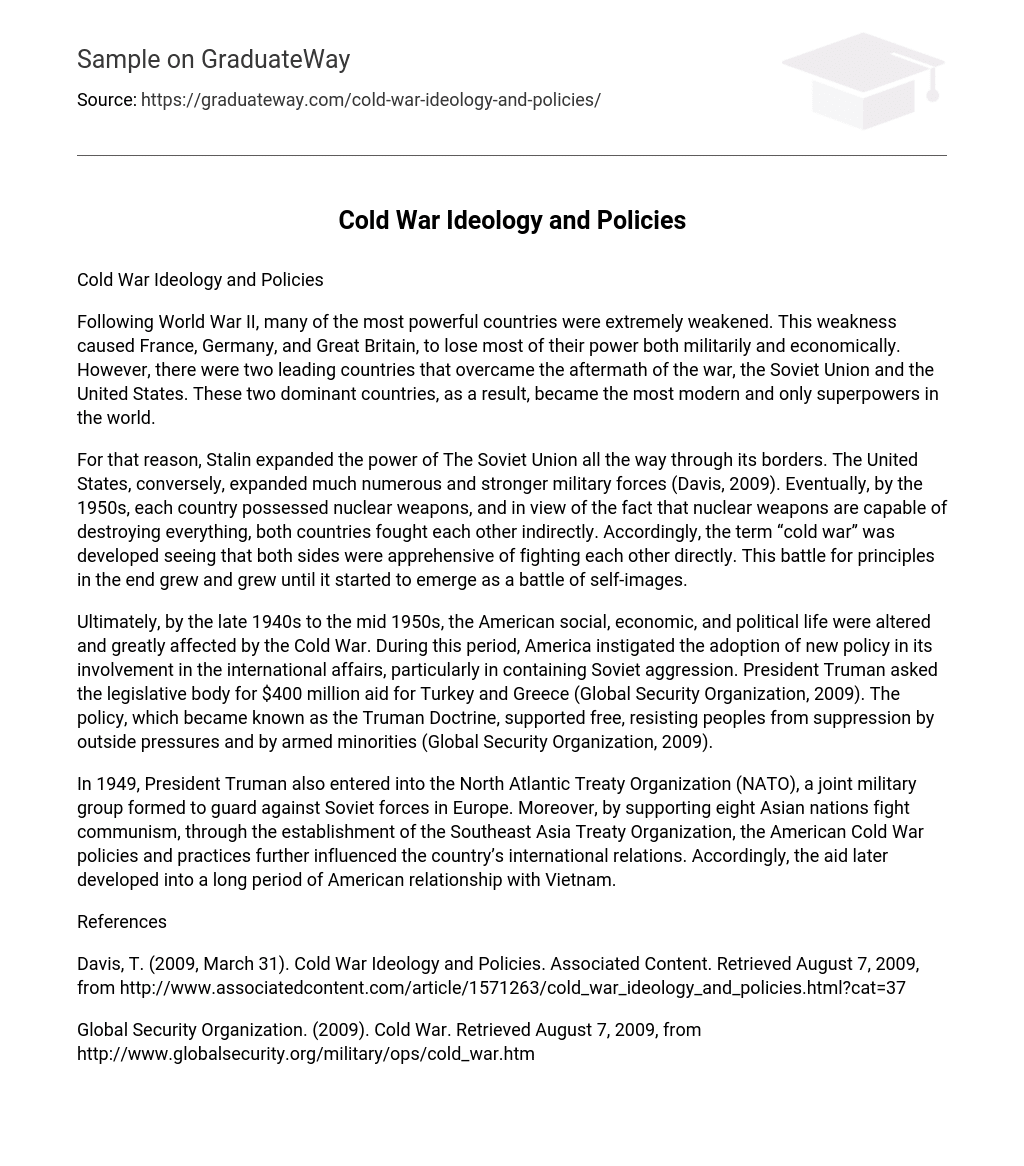Following World War II, many of the most powerful countries were extremely weakened. This weakness caused France, Germany, and Great Britain, to lose most of their power both militarily and economically. However, there were two leading countries that overcame the aftermath of the war, the Soviet Union and the United States. These two dominant countries, as a result, became the most modern and only superpowers in the world.
For that reason, Stalin expanded the power of The Soviet Union all the way through its borders. The United States, conversely, expanded much numerous and stronger military forces (Davis, 2009). Eventually, by the 1950s, each country possessed nuclear weapons, and in view of the fact that nuclear weapons are capable of destroying everything, both countries fought each other indirectly.
Accordingly, the term “cold war” was developed seeing that both sides were apprehensive of fighting each other directly. This battle for principles in the end grew and grew until it started to emerge as a battle of self-images.
Ultimately, by the late 1940s to the mid 1950s, the American social, economic, and political life were altered and greatly affected by the Cold War. During this period, America instigated the adoption of new policy in its involvement in the international affairs, particularly in containing Soviet aggression.
President Truman asked the legislative body for $400 million aid for Turkey and Greece (Global Security Organization, 2009). The policy, which became known as the Truman Doctrine, supported free, resisting peoples from suppression by outside pressures and by armed minorities (Global Security Organization, 2009).
In 1949, President Truman also entered into the North Atlantic Treaty Organization (NATO), a joint military group formed to guard against Soviet forces in Europe. Moreover, by supporting eight Asian nations fight communism, through the establishment of the Southeast Asia Treaty Organization, the American Cold War policies and practices further influenced the country’s international relations. Accordingly, the aid later developed into a long period of American relationship with Vietnam.
References
- Davis, T. (2009, March 31). Cold War Ideology and Policies. Associated Content. Retrieved August 7, 2009, from http://www.associatedcontent.com/article/1571263/cold_war_ideology_and_policies.html?cat=37
- Global Security Organization. (2009). Cold War. Retrieved August 7, 2009, from http://www.globalsecurity.org/military/ops/cold_war.htm





